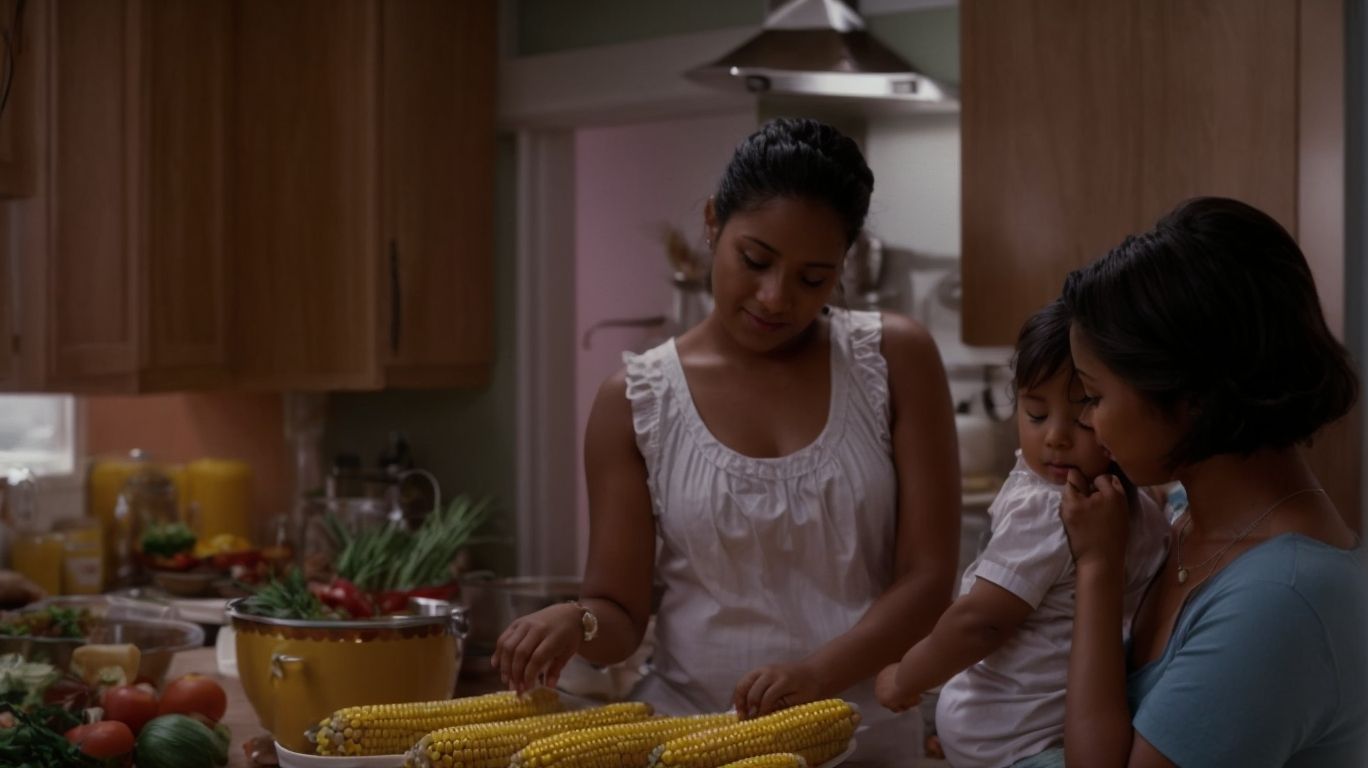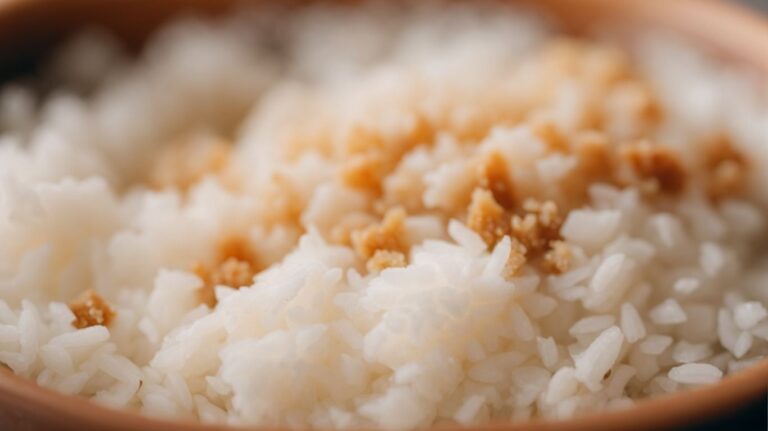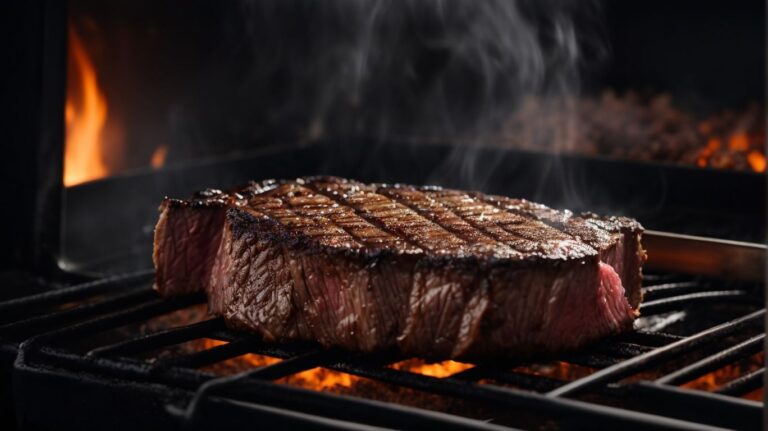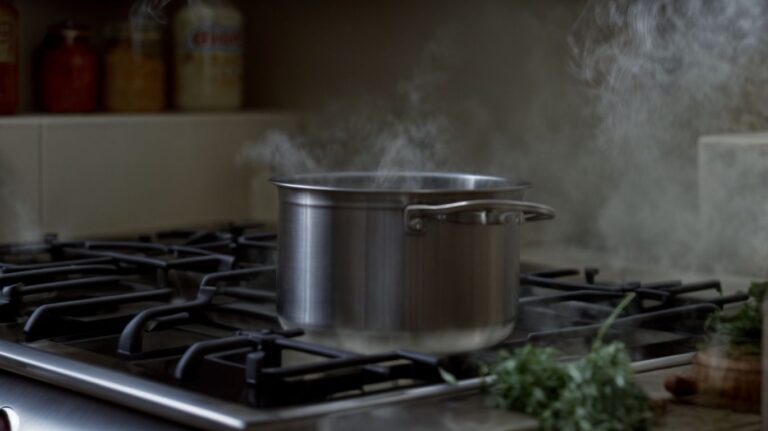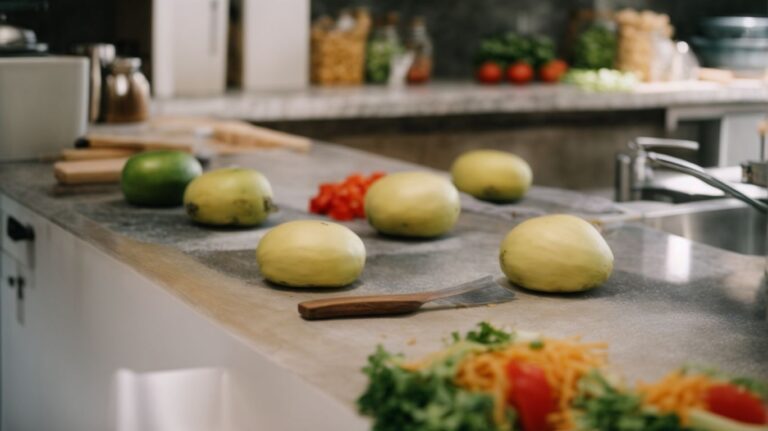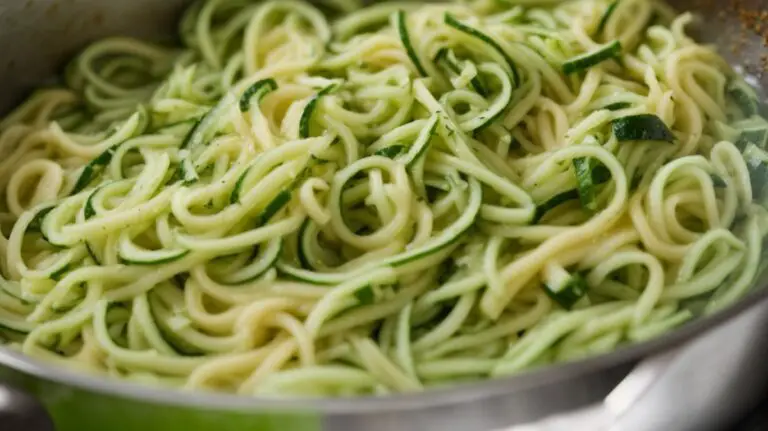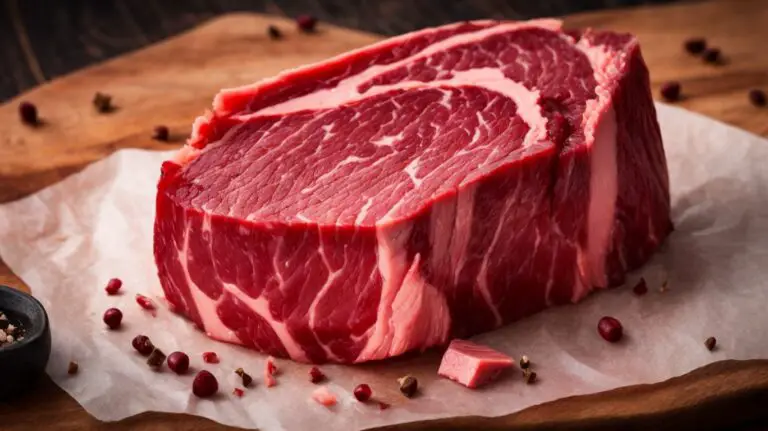How to Cook Corn for Baby?
Are you a parent looking to introduce corn into your baby’s diet but unsure of where to start?
We will guide you through everything you need to know about when babies can start eating corn, choosing the right corn for your little one, and preparing and cooking corn in baby-friendly ways.
From boiling to grilling, we will explore different cooking methods and offer tips on how to add flavor to corn for your baby.
Let’s dive in and learn how to enjoy corn with your little one!
Key Takeaways:
When Can Babies Start Eating Corn?
Introducing corn to babies is a significant step in their nutritional journey, but when can babies start eating corn?
Many pediatricians recommend introducing corn to babies between 8-10 months, once they have successfully tried other single-ingredient foods like rice cereal and pureed fruits and vegetables.
It’s important to consider the baby’s developmental milestones and signs of readiness for solids, such as showing interest in food, being able to sit up with support, and the ability to swallow food.
Corn is a nutritious food for babies, as it provides vitamins, minerals, and fiber essential for their growth and development.
Choosing the Right Corn for Your Baby
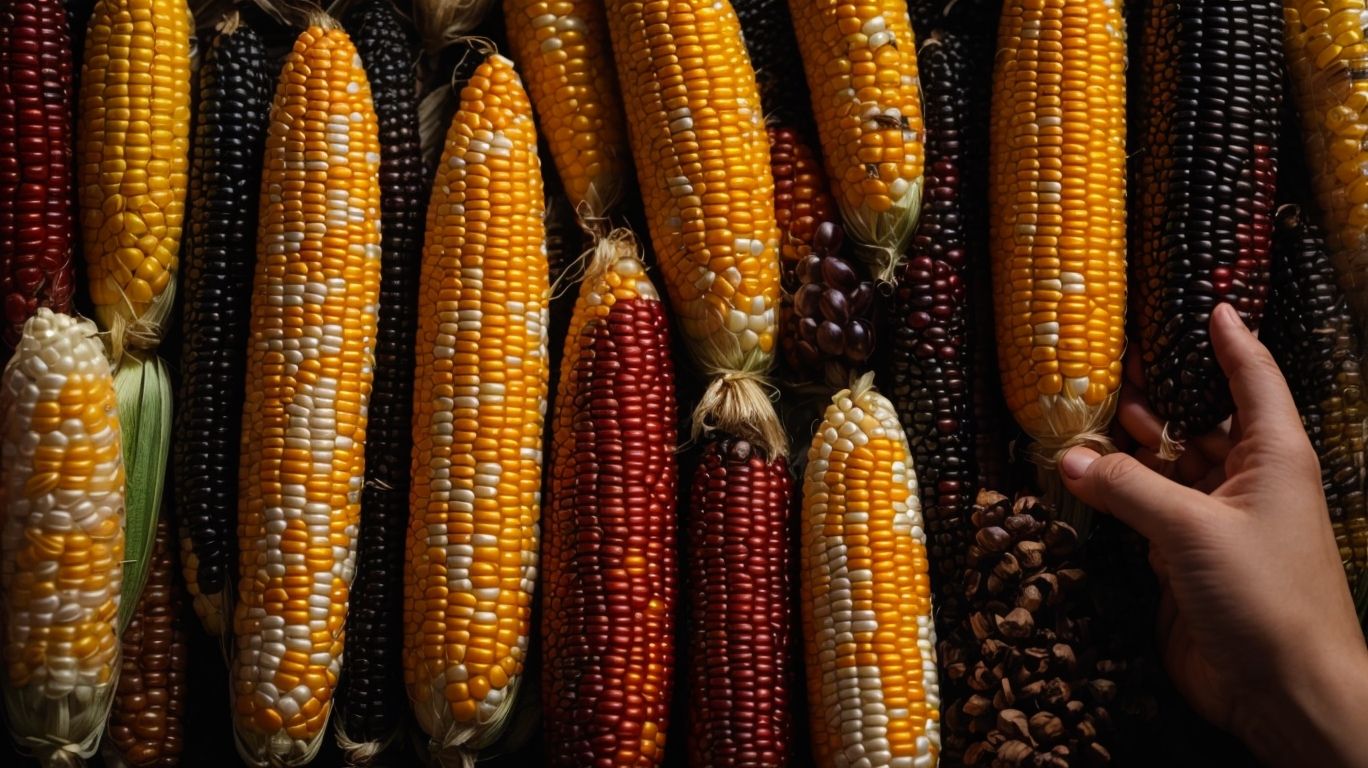
Credits: Poormet.Com – Roger Hill
Selecting the ideal corn for your baby involves considerations of sweetness, allergens, and the form of kernels.
In terms of corn varieties suitable for infants, sweet corn is often the preferred choice due to its natural sweetness and tender texture, making it easier for little ones to chew and digest. It’s important to note that regular corn, like field corn, may not be as suitable for babies due to its tougher kernels and potentially higher risk of causing digestive issues.
Parents should be aware that corn has the potential to be an allergen, although it is not as common as other allergenic foods. If introducing corn to your baby for the first time, monitor for any signs of an allergic reaction, such as rash, swelling, or difficulty breathing.
For optimal digestibility, consider preparing corn kernels by pureeing or cooking them until they are soft and easy to mash. This helps break down the kernels and make them more digestible for your baby’s delicate stomach. When compared to other vegetables, corn is a good source of essential nutrients like fiber, vitamin C, and folate, which are beneficial for your baby’s overall growth and development.
Organic vs. Non-Organic
When choosing between organic and non-organic corn for your baby, consider factors like farming practices and nutrient content.
Organic corn is cultivated without synthetic pesticides or fertilizers, relying on natural methods such as crop rotation and composting to maintain soil health. On the other hand, non-organic corn may contain pesticide residues from conventional farming practices, potentially harmful to sensitive individuals like babies. In terms of nutrient levels, organic corn tends to have higher concentrations of beneficial compounds like antioxidants and essential minerals due to healthier soil conditions.
Opting for organic corn can offer parents peace of mind knowing that their little one is being nourished with wholesome ingredients free from harmful chemicals. The superior quality of organic produce can contribute to the overall health and well-being of babies, supporting their growth and development with nutrient-rich foods.
Fresh vs. Frozen
Deciding between fresh and frozen corn for your baby involves considerations of cooking methods and recipe versatility.
When opting for fresh corn, its natural sweetness and crunchiness can be preserved by steaming or boiling it briefly to retain essential nutrients. Cutting the kernels off the cob and pureeing them can create a smooth texture perfect for baby food. On the other hand, frozen corn offers convenience and can be quickly added to soups, stews, or even homemade vegetable purees without sacrificing much in terms of flavor or nutrition.
To introduce variety, you can incorporate fresh corn in homemade corn chowder or mix it with other vegetables for a colorful medley. Frozen corn can be used in quick and easy recipes like corn and black bean salsa or corn fritters that are perfect finger foods for your little one.
Preparing Corn for Baby
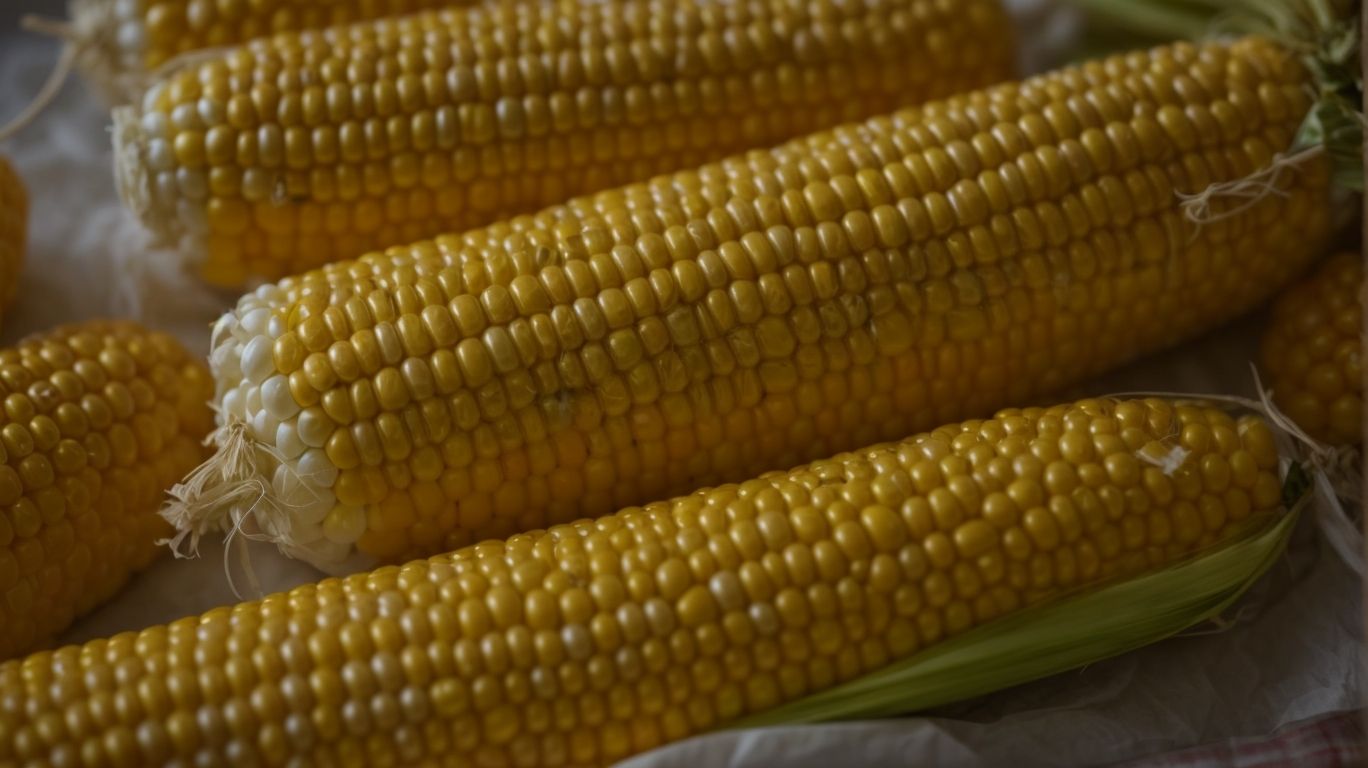
Credits: Poormet.Com – Samuel Carter
Preparing corn for your baby involves essential steps such as cleaning, cooking, and using the right tools for optimal fiber retention.
To start, ensure you choose fresh corn and shuck it by removing the outer husk and silk. Rinse the corn under cold water to remove any remaining silk. For cutting, using a sharp knife on a clean surface is recommended, ensuring safer and precise cuts. To maintain the fiber content, consider steaming or boiling the corn instead of overcooking it. This way, you preserve the nutritional value while making it easier for your baby to digest. The texture of the corn is crucial for infants, so aim for a smooth consistency by pureeing or mashing it before serving.
Shucking and Cleaning the Corn
Shucking and cleaning corn for your baby’s meal requires attention to detail and the use of appropriate cooking tools.
First and foremost, gather essential tools such as a sharp knife, cutting board, and a steamer to ensure a smooth preparation process.
Begin by peeling back the outer layers of the corn husk to reveal the kernels inside. Remove any remaining pieces of silk by running the cob under cold water or using a soft-bristled brush.
Next, carefully cut the kernels off the cob by placing it upright on a cutting board and slicing downwards. Ensure that the kernels are cut into smaller, bite-sized pieces suitable for your baby’s consumption.
Cutting the Corn into Bite-Sized Pieces
Cutting corn into bite-sized pieces for your baby’s meal is essential for safe and enjoyable feeding experiences.
When preparing corn for your little one, it is crucial to ensure that the kernels are cut into small, manageable sizes to prevent any potential choking hazards. Opt for pieces that are easy for your baby to pick up and chew, promoting independence during mealtime.
To incorporate these bite-sized corn pieces into your baby’s meals, consider adding them to purees, soups, or even as a finger food for older infants who are ready for textured foods. Mixing corn with other vegetables and proteins can enhance the nutritional value of your baby’s meals, providing essential vitamins and minerals for healthy growth.
Methods for Cooking Corn for Baby
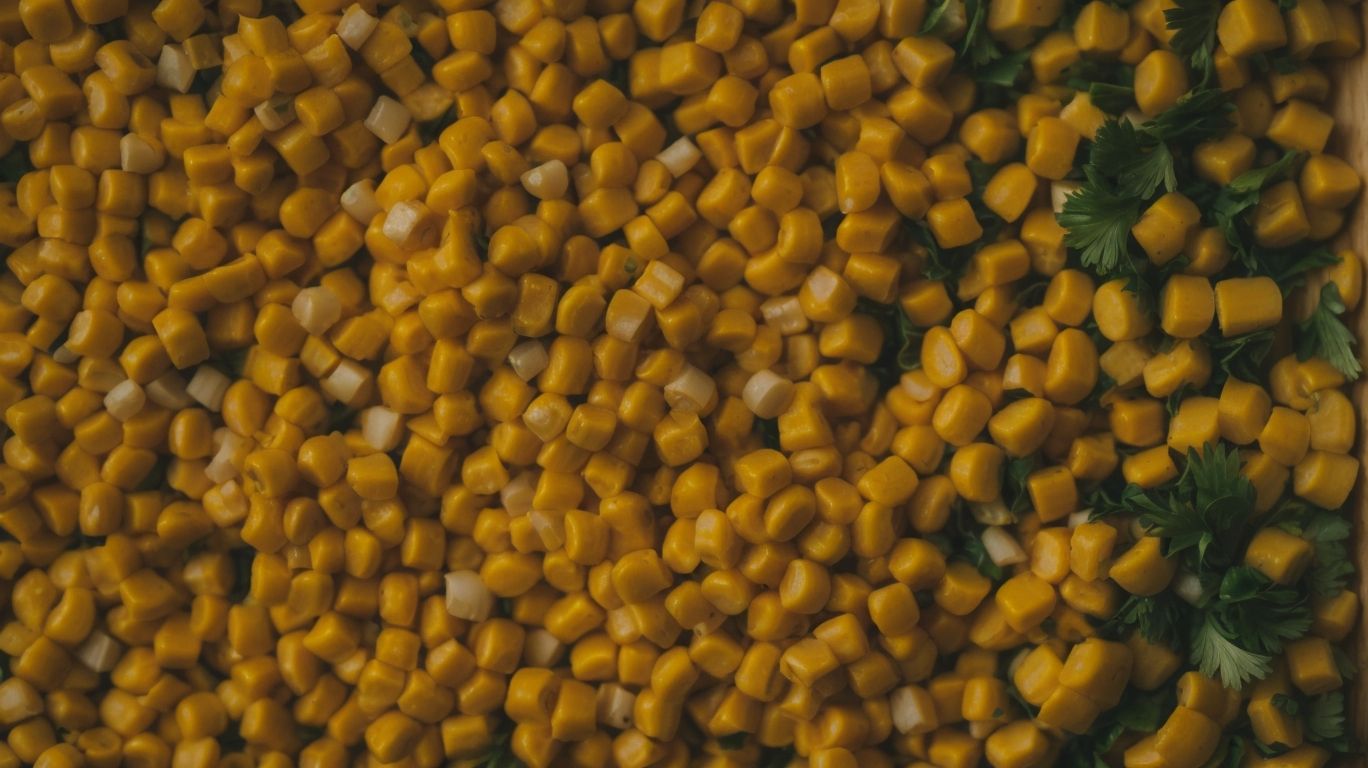
Credits: Poormet.Com – Logan Harris
Exploring various methods to cook corn for your baby opens up opportunities to enhance flavors and textures in their meals.
Boiling corn is a simple and effective method that helps retain its natural sweetness and nutrients. To boil corn for your little one, husk the corn and remove the silk, then place it in a pot of boiling water for around 5-7 minutes until tender.
Steaming corn is another gentle cooking technique that keeps the corn kernels tender and juicy. Prepare a steamer basket over boiling water, place the corn inside, cover, and steam for approximately 10-15 minutes.
Roasting corn can bring out a deeper, caramelized flavor. You can roast corn by grilling it in the husk or remove the husk, wrap it in foil, and place it in the oven at 400°F for about 20-25 minutes.
Grilling corn adds a smoky charred taste to the kernels. Preheat the grill, place the corn directly on the grates, and grill for 10-15 minutes, turning occasionally for even cooking.
Boiling Corn
Boiling corn is a simple yet effective cooking method that retains essential nutrients for your baby’s meal.
When boiling corn for your little one, start by selecting fresh ears of corn with bright green husks and plump kernels. Remove the husks and silk, then rinse the corn under running water to ensure cleanliness. Next, bring a pot of water to a boil and add the corn, ensuring it is fully submerged. Boil for about 5-7 minutes until the kernels are tender yet still slightly crisp.
To incorporate this nutritious ingredient into your baby’s diet, consider making a creamy corn purée by blending boiled corn with a splash of breastmilk or formula until smooth. This versatile purée can be served on its own as a tasty and wholesome meal or mixed with other veggies like sweet potatoes or peas for added flavor and nutrients.
Steaming Corn
Steaming corn is a nutritious cooking method that helps maintain the natural goodness of this wholesome ingredient for your baby.
Steaming corn for your baby’s meals not only preserves its original nutrients but also enhances its texture and flavor. By steaming, you retain essential vitamins and minerals, ensuring that your little one gets the best of this healthy vegetable. Steamed corn is easy for babies to digest, making it an ideal choice for their delicate tummies. Incorporating steamed corn into your baby’s diet can help introduce them to different tastes and textures, laying a strong foundation for a lifetime of healthy eating habits.
Roasting Corn
Roasting corn brings out a delightful flavor profile that can entice your baby’s taste buds and introduce them to new culinary experiences.
When roasted, the natural sugars in the corn caramelize, creating a subtle sweetness that complements its earthy undertones perfectly. The process also enhances the corn’s natural crunchiness, adding a satisfying texture for your little one to explore. Roasting corn can be a simple yet effective way to introduce your baby to different tastes and aromas, helping them develop a more nuanced palate early on. By incorporating roasted corn into homemade baby meals, you can provide a nutritious and flavorful option that is both enjoyable and beneficial for their sensory development.
Grilling Corn
Grilling corn adds a smoky charred flavor that elevates the taste profile, making it an exciting option for your baby’s culinary journey.
Beyond just the taste, grilled corn also boasts a visually appealing charred exterior that will catch your little one’s eyes, making mealtime an enjoyable sensory experience. To serve, cut the kernels off the cob for easier handling and offer them as a finger food or mix them into purees for added texture. You can even sprinkle a dash of mild seasoning or herbs for a gentle flavor enhancement that will captivate your baby’s taste buds.
How to Serve Corn to Your Baby
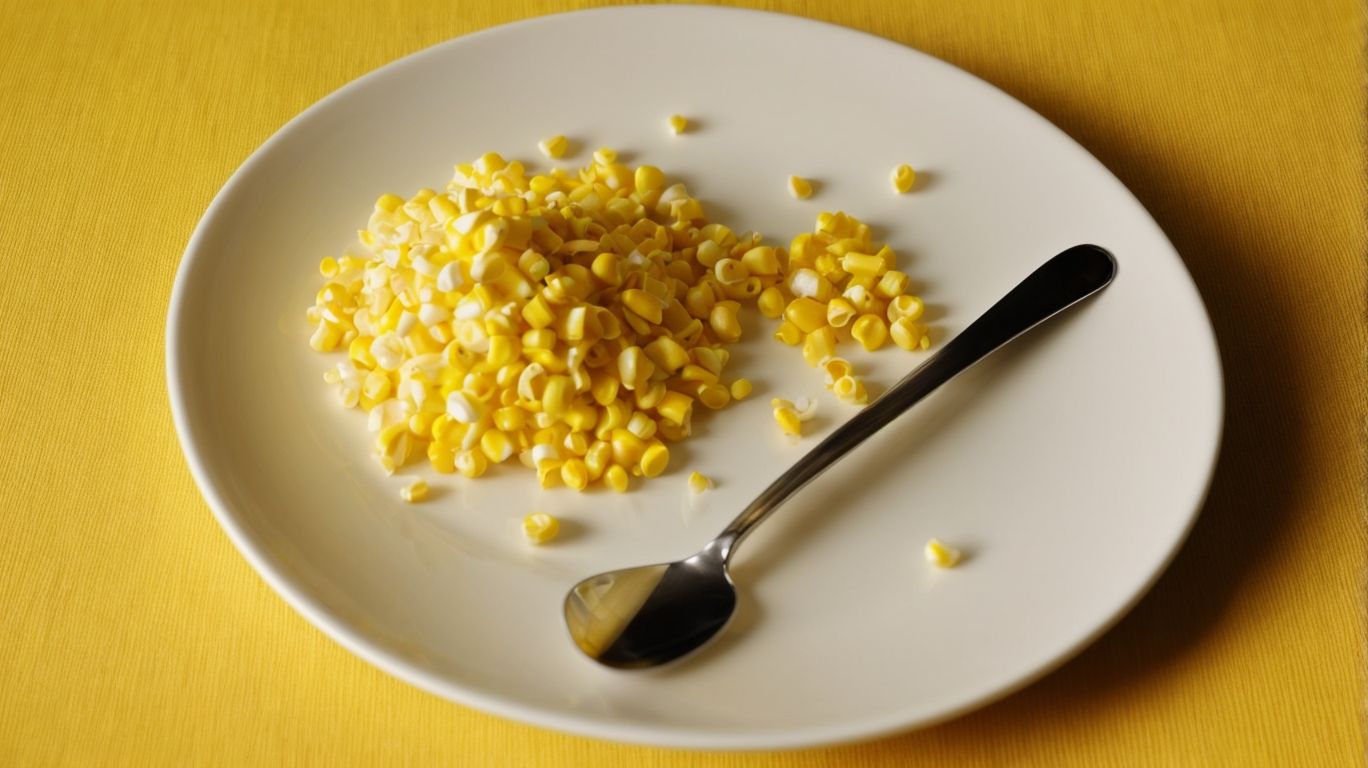
Credits: Poormet.Com – Jason Taylor
Serving corn to your baby involves considerations of blending for younger babies and transitioning to finger foods for older infants.
For younger infants, pureed corn is an ideal choice as it ensures easy digestion and reduced choking risk. As your little one grows older and starts exploring different textures and tastes, you can gradually introduce finely chopped or finger-sized pieces of corn. This helps in developing their chewing skills and encourages self-feeding.
It’s essential to pay attention to the texture progression in your baby’s diet as it plays a crucial role in their overall development. To make corn more appealing, you can mix it with other nutritious ingredients or seasonings. Be cautious of any potential allergies and always consult your pediatrician before introducing new foods.
Mashing or Pureeing Corn for Younger Babies
Mashing or pureeing corn is a convenient way to introduce this nutritious ingredient to younger babies who are exploring solid foods.
Corn is rich in essential nutrients like fiber, vitamins, and minerals, making it a wholesome addition to your baby’s diet.
To prepare mashed or pureed corn for your little one, start by cooking fresh or frozen corn until it’s tender. Once cooked, let it cool before blending it into a smooth consistency using a food processor or blender.
You can enhance the flavor and nutritional value of mashed corn by mixing it with steamed carrots or sweet potatoes. These combinations not only add variety but also provide a balanced meal for your baby. Remember to introduce one new ingredient at a time to monitor for any allergies or sensitivities.
Cutting Corn into Small Pieces for Older Babies
Transitioning to cutting corn into small pieces is a milestone for older babies ready to explore self-feeding and different textures.
When preparing corn for your little one, it’s crucial to follow certain safety measures to ensure they can handle the food easily. Begin by cooking the corn until it’s tender, making it simpler to cut into smaller, more manageable pieces. Using a sharp knife, carefully slice the corn kernels off the cob, creating bite-sized portions that are safe for your baby to handle. These small pieces will help them practice their pincer grasp and improve their hand-eye coordination.
By introducing finger foods like corn, you are not only offering your child a nutritious snack but also giving them the opportunity to develop their sensory skills. It encourages them to explore different textures, enhancing their overall eating experience. Allowing your baby to self-feed with foods like corn can aid in the development of their fine motor skills, as they learn to pick up and bring food to their mouth independently.
Tips for Adding Flavor to Corn for Babies
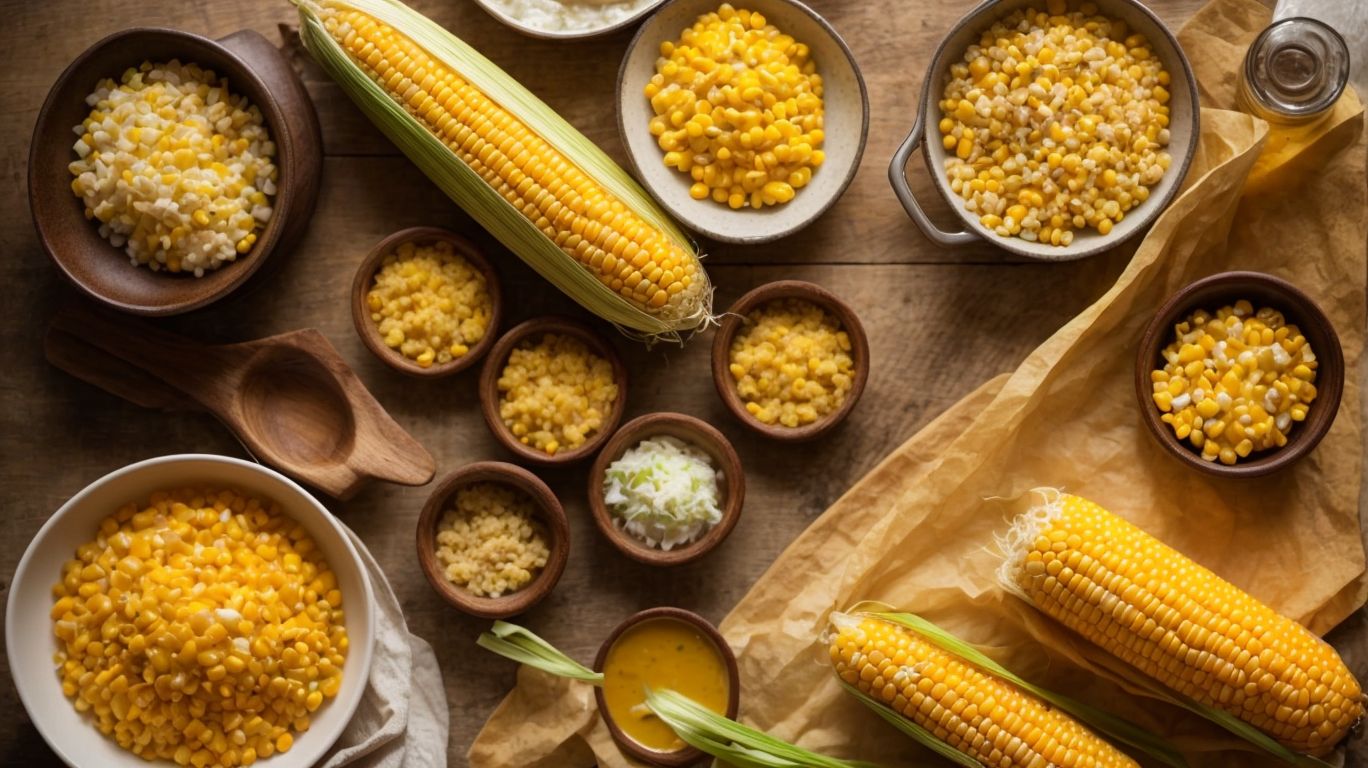
Credits: Poormet.Com – Christopher Lewis
Enhancing the flavor of corn for your baby involves exploring seasoning options that are safe and appealing for young taste buds.
When introducing seasonings to your baby’s diet, consider subtle herbs such as parsley, dill, or chives that can enhance the sweetness of corn without causing any digestive issues. Blend in a pinch of mild spices like cinnamon or nutmeg for a gentle touch of flavor. Remember, it’s essential to introduce new flavors gradually to monitor for any potential allergenic reactions. By exposing your little one to a variety of tastes early on, you can help develop their palate and foster a love for diverse foods.
Seasoning Options
Choosing the right seasoning options for corn allows you to create enticing dishes for your baby while ensuring their safety and enjoyment.
In terms of introducing flavors to your little one, it’s essential to opt for natural ingredients that are gentle on their delicate palate.
Mild herbs
- such as parsley,
- chives, or
- thyme
can add a subtle depth of flavor without overpowering the natural sweetness of corn. A sprinkle of garlic powder can provide a hint of savory taste, while lemon juice offers a refreshing tang that complements the corn’s inherent freshness. These baby-friendly seasonings not only enhance the taste of the corn but also introduce them to a variety of subtle flavor profiles.
Serving with Other Foods
Incorporating corn into diverse recipes and serving it with other foods can introduce new flavors and textures to your baby’s diet.
When blending corn with ingredients like sweet potatoes, peas, and carrots, you not only enhance the taste but also offer a variety of nutrients to support your baby’s growth and development. Combining corn with protein-rich foods such as chicken or lentils can provide a balanced meal that boosts energy levels and promotes muscle growth. Mixing corn with healthy fats like avocado or olive oil can help in absorbing essential vitamins and minerals.
Conclusion: Enjoying Corn with Your Baby
Incorporating corn into your baby’s diet can be a delightful and nutritious experience that introduces them to a world of flavors and textures.
Corn is packed with essential nutrients such as fiber, vitamins, and minerals, making it an excellent addition to your baby’s meals. Its gentle taste and soft texture make it a great choice for introducing new foods to your little one. Safety-wise, corn is easy to digest and is generally well-tolerated by babies, reducing the risk of any adverse reactions.
By introducing a variety of corn-based dishes early on, you can help your baby develop a diverse palate and appreciation for different flavors. From creamy corn purees to corn and vegetable medleys, the options are endless, enabling you to create nutritious and tasty meals that your baby will enjoy.
Frequently Asked Questions
How to Cook Corn for Baby?
1. What is the best way to cook corn for my baby?
The best way to cook corn for your baby is to steam or boil it. This method helps retain the nutrients and natural sweetness of the corn. Avoid adding any seasonings or salt while cooking for your baby.
2. Can I give my baby canned corn?
It is not recommended to give canned corn to your baby. Canned corn usually contains added salt and preservatives, which are not suitable for babies. It is best to use fresh or frozen corn for your baby’s food.
3. How long should I cook corn for my baby?
Corn can be cooked in 10-15 minutes, depending on the size and freshness. For babies, it is recommended to cook corn until it is soft and easily mashed with a fork. This usually takes about 10 minutes.
4. Should I remove the corn kernels for my baby’s food?
It is not necessary to remove the corn kernels for your baby’s food. However, if your baby is still learning how to chew, you can mash the corn kernels or puree them to make it easier for them to eat.
5. Can I add any seasonings to baby’s corn?
It is not recommended to add any seasonings or salt to baby’s corn. Babies do not need any added flavors or salt in their food. The natural sweetness of the corn is enough for their taste buds.
6. At what age can I introduce corn to my baby?
Corn can be introduced to babies around 6-8 months of age. It is important to introduce one new food at a time and watch for any allergic reactions. If your baby has a family history of corn allergy, consult with a pediatrician before introducing it.

